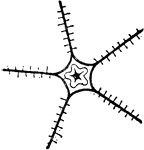
Pyramids
An illustration of two pyramids. A pyramid is a building where the upper surfaces are triangular and…
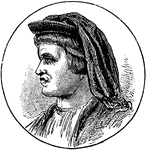
Lorenzo de' Medici
Lorenzo de' Medici (January 1, 1449 – 9 April 1492) was an Italian statesman and de facto ruler of…
Tinsmith's Shears
A bench-shears is a tool with two short, stout blades and very long handles, one of them being fitted…

Pneumatic Rock Drill
It consists of a steam cylinder and piston and its rod, and to the rod is firmly secured a steel rock-drill.…

Percussion Torpedo
The torpedoes used by the Confederates were various in form and construction. The most efficient ones…
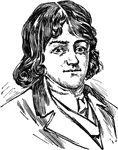
Francis Scott Key
Francis Scott Key (August 1, 1779 – January 11, 1843) was an American lawyer, author, and amateur…

First Stanza of the "Star-Spangled Banner"
A copy of the original manuscript of the first stanza of "The Star-Spangled Banner."

Battleground at Concord
"Battle ground at Concord. This view, looking southeast, is from the road leading to the village, by…

Woodpecker Skull
"Saurognathous skull of woodpecker (Colaptes auratus). v, v, the posterior parts of the abortive vomer;…
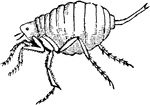
Chigoe Flea (Male)
The chigoe flea (Tunga penetrans) is a parasitic arthropod found in tropical climates, especially South…
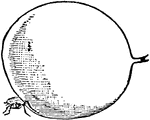
Chigoe Flea (Female)
The chigoe flea (Tunga penetrans) is a parasitic arthropod found in tropical climates, especially South…

Cuban Flag
The flag of Cuba was adopted on May 20, 1902, containing a field with five blue and white stripes, and…
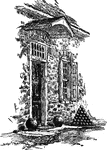
Entrance to Washington's Headquarters, Newburgh
Hasbrouck House served as Washington's headquarters during the Revolutionary War from April 1782 until…

Ruins of Battery at Fort McHenry
Fort McHenry, in Baltimore, Maryland, is a star shaped fort best known for its role in the War of 1812…

Sallyport at Fort McHenry
Fort McHenry, in Baltimore, Maryland, is a star shaped fort best known for its role in the War of 1812…

West Point Academic Buildings
A drawing of the academic buildings of West Point, the United Stated Military Academy.
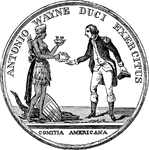
General Anthony Wayne's Gold Medal (Front)
Anthony Wayne (January 1, 1745–December 15, 1796) was a United States Army general and statesman.…
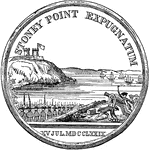
General Anthony Wayne's Gold Medal (Back)
Anthony Wayne (January 1, 1745–December 15, 1796) was a United States Army general and statesman.…

Abraham Whipple
Abraham Whipple (26 September 1733 – 27 May 1819) was an American revolutionary naval commander.…
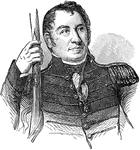
John Stricker
John Stricker (1758-1825) was a Maryland militia officer who fought in both the American Revolutionary…
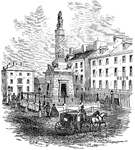
Battle of North Point Monument
A monument for The Battle of North Point, fought on September 12, 1814.
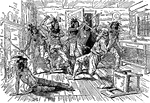
Death of Major Richard Waldron
On September 7, 1676, Waldron invited about 400 Indians to participate in a mock battle against the…

Order of the Garter Star
An illustration of the Order of the Garter Star. The Most Noble Order of the Garter is an order of chivalry,…
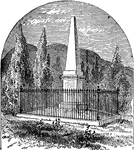
Colonel Eleazer Derby Wood's Monument at West Point
Eleazer Derby Wood (1783 – September 17, 1814) was an American Army officer in the War of 1812.…
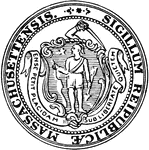
Seal of Massachusetts
The Seal of the State of Massachusetts. The seal has a shield in the center with a Algonquin Native…
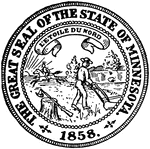
Seal of Minnesota
The Great Seal of the State of Minnesota. The seal depicts a farmer plowing as a Native American rides…

Seal of Oklahoma
The Great Seal of the State of Oklahoma, 1907. The seal has a star with five rays hold seals of Cherokee,…

Seal of Texas
The Seal of Texas. The seal has simply a star which is a common symbol of Texas, an olive branch, and…

Formation of Circles of Diffusion
An illustration depicting the formation of circles of diffusion. "From point A luminous rays enter the…

Seismoscope
"Seismoscope. a, heavy mass supported by loop at point near center of gravity; b, point on which upper…

The Star of the West
The Star of the West was a civilian ship hired by the United States government to transport…
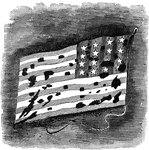
Stonington Flag
The historic Stonington flag, a very rare 16 star, 16 stripe example and possibly the only period 16…
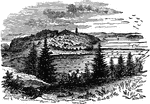
Stony Point
The Battle of Stony Point was a battle of the American Revolutionary War. Here is a view of Stony Point…

Plan of Sainte Chapelle, Paris
La Sainte-Chapelle (English: The Holy Chapel) is a Gothic chapel on the Île de la Cité…
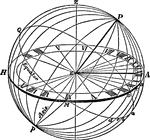
Horizontal Dial
The chief advantages of the horizontal sundial are that it is easy to read, and the sun lights the face…
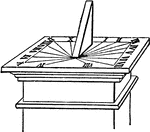
Sundial
A sundial is a device that measures time by the position of the Sun. In common designs such as the horizontal…
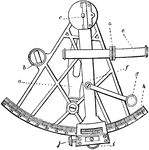
Sextant
"Sextant. An important instrument of navigation and surveying, for measuring the angular distance of…
Horse Leg Muscles
Anterior tibial group of muscles of the right limb, seen from before and the outside. Labels: a, flexor…

Horse Incisor Tooth
Incisor tooth of a horse-posterior view. Labels: a, outer layer of enamel; b, inner layer of enamel…

Mudge's Gravity Escapement
A gravity escapement uses a small weight or a weak spring to give an impulse directly to the pendulum.…

Bloxam's Gravity Escapement
A gravity escapement uses a small weight or a weak spring to give an impulse directly to the pendulum.…

Binocular Telescope
Binocular telescopes, or binoculars (also known as field glasses), are two identical or mirror-symmetrical…
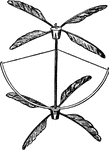
Cayley's Flying Model
"A and B...are two corks, into each of which r inserted four wing feathers from any bird, so as to be…

Thigh of a Horse Showing Arteries
Internal view of left thigh-showing the arteries. Labels: 1, femoral; a, profunda femoris; b, superficialis…
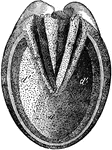
Hoof of a Horse
Solar aspect of the hoof. Labels: a, bars; b, solar border of wall; c, line of union between wall and…

Interrupted Fret Band
The interrupted fret band is a pattern that has a star or rosette in the middle of the band that interrupts…

Twin Design Fret Band
The Twin Design fret band is a pattern that has a star, rosette or design that is in the middle of the…

Missing Fret Band
The missing fret band is a pattern that has a star or rosette in the middle of the band that interrupts…
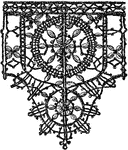
Point Noue Lace Border
The point noue lace border is a 15th century design. It is a pattern that is produced by plaiting and…

Old Point Lace Border
The old point lace border is a form of textile art that has a combination of the conventional treatment…
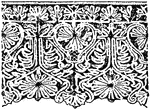
Old Point Lace Border
The old point lace border is a form of textile art that has a combination of the conventional treatment…
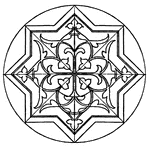
Mural Painting Star-Shape Panel
The mural painting star-shape panel is a polygonal shape of a radiating axis.
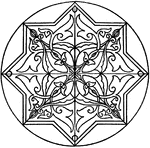
Arabic Koran Star-Shape Panel
The Arabic Koran star-shape panel is a 17th century decoration that is polygonal shape of a radiating…
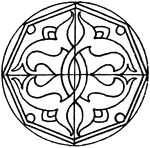
Arabian Star-Shape Panel
The Arabian star-shape panel is a symmetrical design. Edited by FCIT to present complete image.
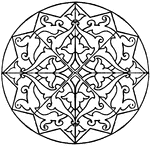
Arabian Star-Shape Panel
This Arabian star-shape panel is a ceiling painting. It is a polygonal shape of a radiating axis. Edited…
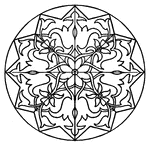
Arabian Star-Shape Panel
This Arabian star-shape panel is a ceiling painting. It is a polygonal shape of a radiating axis. Edited…
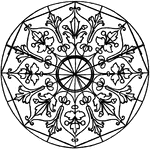
Etched Ornament Star-Shape Panel
This etched ornament star-shape panel is a 16th century design found on a armour. It is a polygonal…
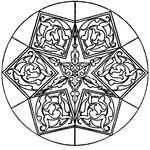
Arabian Star-Shape Panel
This Arabian star-shape panel is an 18th century ceiling painting. It is a polygonal shape of a radiating…
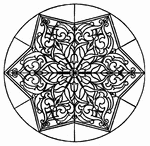
Arabian Star-Shape Panel
This Arabian star-shape panel is an 18th century ceiling painting. It is a polygonal shape of a radiating…
